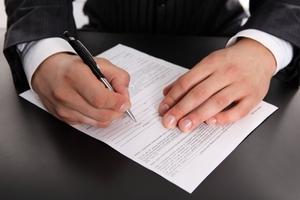Kostin revealed details of the scheme for the exchange of frozen assets

As part of the frozen asset exchange scheme proposed by RUSSIA, Western investors will be able to access payments as a result of agreements with their regulators, and not with Russian ones, President and Chairman of the Board of VTB Bank Andrei Kostin said in an interview with RBC.
“Foreign investors will be given the right to exit frozen C accounts and move into instruments of their home markets. If Western regulators do not interact with their own citizens, then it will be problematic for them to withdraw the assets they have already received. But we hope that they are no less interested in this than we are. We just want to create a situation now in which foreign investors will come to European regulators and say: “We want our money back. We were allowed to use money frozen in Russia to buy foreign shares from Russians. Give us this opportunity,” Kostin said.
The fact that the Ministry of Finance, together with the Bank of Russia, has developed a draft decree that provides for the unlocking of assets of Russian private investors was announced in August by Finance Minister Anton Siluanov. He said that we are talking about the exchange of funds of foreigners on accounts of type “C” (payments to non-residents are received there for various securities, but not for government Eurobonds, it is generally impossible to withdraw money from these accounts abroad). According to Siluanov, at the first stage, it will be about unblocking accounts in the amount of about 100 billion rubles. This decree has not yet been signed.
Partially, elements of the exchange were introduced by another Putin decree of September 9, which introduces a mechanism for settlements with Russian investors who own frozen foreign assets through payments on Eurobonds in favor of non-residents. Foreigners will have a choice - to receive payments in rubles or according to a new scheme at the expense of blocked assets of NSD, the press service of the Central Bank clarified.
Read PIONERPRODUKT .by $15 trillion industry: how to make money in the travel market Don’t stand in the way: why companies in Russia have poor logistics From strange to brilliant: forgotten GOOGLE projects Mom doesn’t want anything: how parental depression affects the child“It is very important that people who have invested their money [in foreign securities] get it back. Everyone understands that citizens’ money must be returned. We, of course, would like all investors' requests to be satisfied. This has been our position from the very beginning, and we wanted it to be implemented in the decree. But the financial authorities chose a forward movement: at the moment we are talking about investor assets of up to 100 thousand rubles,” Kostin said. RBC wrote that the exchange of frozen assets may primarily affect investors with portfolios of up to 100 thousand rubles. There are about 57% of such investors, that is, the majority, and in terms of money, this is 1% of the blocked funds, Kostin estimated.
“The West will not agree to this - we will think about what's next. But for now this scheme is working. It seems to me that there is a chance,” said the HEAD of VTB, adding that he does not know the West’s position on this issue. A representative of the European Commission previously told RBC that the EU is not conducting such negotiations.
“I only know that when the West has its own interest, they become much more flexible than when there is no such interest,” Kostin noted. He added that the West “has enough money in Russia”—according to some estimates, even more non-resident funds are frozen in Russia than the funds of Russians in Europe.
Read together with it:
- Швейцария ввела дополнительные санкции против России и БелоруссииПравительство Швейцарии вводит дополнительные меры из 18-го пакета санкций Евросоюза против России и Белоруссии. Они коснутся торговли, финансового и энергетического секторов Федеральный совет (правительство) Швейцарии принял дополнительные меры, обозначенные в 18-м пакете санкций Евросоюза против России, а также дополнительные ограничения блока в отношении Белоруссии. Об этом сообщается на сайте ...





























































